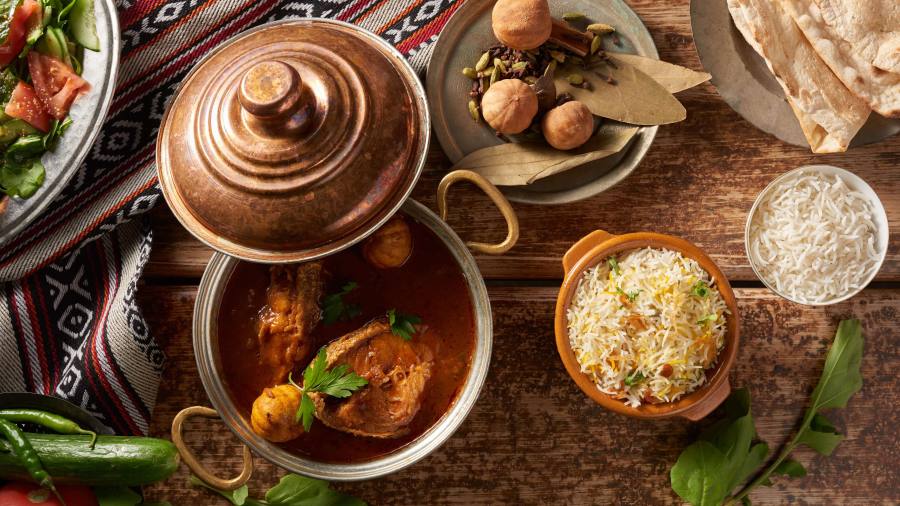South America Gastronomy Cities
Buenos Aires Gastronomy City
Buenos Aires, Argentina's capital, is a lively city famous for its grand European-inspired buildings, passionate dance culture, and flourishing creative community. Home to about 3 million residents, it's among South America's biggest urban centers and a key financial hub.
The city experiences mild weather throughout the year, with warm summers and cool winters. Its urban plan features broad avenues lined with trees, impressive squares, and unique neighborhoods, each with its own distinct atmosphere and appeal.
- The capital of Argentina boasts a rich food scene with European and South American influences
- Locals embrace late-night dining, social meals, and iconic dishes like grilled meats and stuffed pastries
- Visitors can indulge in upscale restaurants, casual street eats, and bustling food bazaars
Why food enthusiasts flock to Buenos Aires
Buenos Aires is a haven for those who love good food. The city's culinary offerings blend Italian and Spanish immigrant traditions with Argentine classics, creating a unique and enticing food landscape.
This mix results in a food scene that feels both recognizable and new, cozy and thrilling. From sizzling meat restaurants to quaint coffee shops, there's a dish for every taste.
An interesting aspect of dining here is the late dinner culture. It's typical for eateries to start getting busy around 9 or 10 PM. This nighttime dining habit is deeply rooted in the city's social customs.
Eating habits of Buenos Aires locals
To fully appreciate Buenos Aires' food culture, try following the local eating schedule:
- Breakfast: Begin your day with medialunas (sweet pastries) and a robust coffee at a traditional café.
- Lunch: Pick up a quick empanada or sandwich from a nearby bakery.
- Merienda: Around 5 PM, have a light snack and coffee to hold you over until dinner.
- Dinner: Go out for a late dinner around 9 or 10 PM. This is typically the main meal.
Keep in mind that meals in Buenos Aires are social events. Take your time, relish your food, and enjoy chatting with friends or family.
Popular dishes you shouldn't miss in Buenos Aires
Your visit to Buenos Aires won't be complete without sampling these classic foods:
- Asado: This traditional barbecue is central to Argentine cuisine. It usually includes various beef, pork, and lamb cuts grilled to perfection.
- Empanadas: These tasty pastries come with different fillings such as beef, chicken, or cheese.
- Choripán: A simple yet delicious sandwich made with grilled chorizo sausage and crusty bread.
- Milanesa: A thin slice of beef (or sometimes chicken) that's breaded and fried.
- Locro: A filling stew made with corn, beans, and meat, often eaten during national holidays.
For something sweet, try alfajores (cookie sandwiches filled with dulce de leche) and helado (Argentine-style ice cream).
Top spots for exceptional steak in Buenos Aires
Buenos Aires is renowned for its steakhouses, known locally as parrillas. Here are some highly recommended options:
- Don Julio: Often regarded as the city's best steakhouse, it's known for its top-quality cuts and extensive wine selection.
- La Cabrera: This popular place offers generous portions and a lively atmosphere.
- El Pobre Luis: A more casual option that locals love for its authentic flavors.
When ordering steak, sample different cuts like bife de chorizo (sirloin), ojo de bife (ribeye), or vacío (flank steak). And don't forget to pair it with a glass of Malbec!
Exploring Buenos Aires food markets
Food markets offer a great way to experience local flavors and culture. Here are some must-visit markets:
- Mercado de San Telmo: This historic market is ideal for trying local specialties and buying souvenirs.
- Mercado de Liniers: Known as the "cow market," it's where many restaurants get their beef.
- Buenos Aires Market: A traveling organic market that appears in different neighborhoods each weekend.
When visiting markets, bring cash and be ready to negotiate prices. It's also wise to arrive early for the best selection.
The significance of mate in Buenos Aires
Mate is more than just a beverage in Buenos Aires - it's a social custom. This caffeine-rich herbal tea is shared among friends and family using a special gourd and metal straw called a bombilla.
To drink mate like a local:
- Wait for it to be passed to you
- Drink all the liquid in the gourd
- Pass it back to the person preparing the mate
- Say "gracias" when you're finished
Don't be surprised to see people carrying thermoses and mate gourds all over the city. It's a cherished part of daily life in Buenos Aires.
Finding lesser-known restaurants in Buenos Aires
While popular restaurants are great, some of the best food experiences in Buenos Aires are found in unexpected places. Here are some tips for finding hidden gems:
- Ask locals: Porteños are usually happy to share their favorite spots.
- Visit residential areas: Neighborhoods like Almagro and Villa Crespo often have great, lesser-known restaurants.
- Look for puertas cerradas: These "closed door" restaurants operate out of people's homes and offer unique dining experiences.
- Follow food bloggers: Local food bloggers often share insider tips and new restaurant discoveries.
Remember, some of the best meals might be in modest-looking places. Don't judge a restaurant by its appearance!
Coffee culture in Buenos Aires
Coffee plays a big role in Buenos Aires, thanks to its Italian immigrant influence. The city is filled with charming cafes, from historic cafés notables to modern specialty coffee shops.
Here's a quick guide to ordering coffee in Buenos Aires:
Café: Espresso
Cortado: Espresso with a small amount of milk
Café con leche: Coffee with milk (similar to a latte)
Submarino: Hot milk served with a bar of chocolate to melt in
For an authentic local experience, visit one of the city's historic cafes like Café Tortoni or Las Violetas. These grand, ornate spaces are perfect for observing city life while enjoying your coffee.
Eating well without spending too much in Buenos Aires
Enjoying good food in Buenos Aires doesn't have to be expensive. Here are some tips for budget-friendly dining:
- Look for menú del día specials: Many restaurants offer fixed-price lunch menus that include multiple courses.
- Try street food: Items like choripán and empanadas are tasty and affordable.
- Visit local pizzerías: Pizza is popular and reasonably priced in Buenos Aires.
- Eat at bodegones: These simple local restaurants offer hearty, home-style meals at good prices.
- Shop at markets: Buying ingredients and cooking for yourself can save money, especially for longer stays.
Remember, tipping is expected in Buenos Aires, but it's typically around 10% of the bill.
FAQs
When do people usually eat dinner in Buenos Aires?
Dinner in Buenos Aires typically starts late, around 9 PM or even later. Many restaurants don't open for dinner until 8 PM, and they start getting busy around 10 PM. This late dining culture is part of the city's social fabric, so adjust your schedule accordingly.
Can vegetarians find good food options in Buenos Aires?
While Buenos Aires is famous for its beef, the city has become more accommodating to vegetarians in recent years. Many restaurants now offer vegetarian and vegan options, and there are several fully vegetarian and vegan restaurants in neighborhoods like Palermo and San Telmo. However, it's always a good idea to check menus in advance if you have dietary restrictions.
What's the best way to get to different restaurants in Buenos Aires?
Buenos Aires has a comprehensive public transportation system, including buses and a subway (called Subte). Taxis and ride-sharing apps are also widely available. Many popular dining areas, like Palermo and San Telmo, are easy to explore on foot. For longer distances, consider using the Subte or a taxi. Always be aware of your surroundings, especially at night.












 Gastronomy Cities
Gastronomy Cities
 Amazing Food
Amazing Food
 Chef's Talk
Chef's Talk